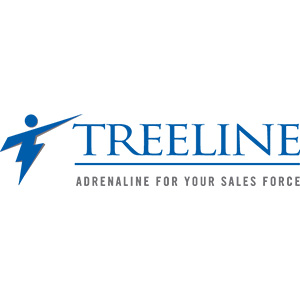Imagine you’ve been working on a significant opportunity for several months. You’ve  invested long hours with all of the key players and it’s almost time to go to contract. The final step is a simple “show-n-tell” presentation that you need to deliver to the executive committee. All you need is their nod and you’re off to the bank to deposit the commission check.
invested long hours with all of the key players and it’s almost time to go to contract. The final step is a simple “show-n-tell” presentation that you need to deliver to the executive committee. All you need is their nod and you’re off to the bank to deposit the commission check.
The day of the big pitch arrives and you’re feeling good. You walk confidently into the boardroom, connect your laptop and launch the presentation. Suddenly all eyes are on you and without warning you find yourself stumbling through a lame introduction that goes something like: “Hi, my name is Bob and I work for XYZ Company. Thanks for taking some time to be here today.”
You race through the deck until you get to the meat of the presentation (easily identified by the slides that have lots of words typed in small fonts). Finally you begin to feel strangely comfortable as you start reading these complex screen shots to the decision makers.
And then, without warning you find yourself staring at a blank slide. There is nothing left in the deck so you immediately ask for questions and of course there aren’t any. You awkwardly thank everyone for their time and head back to the office. Now you’re left with no clue if you’ll win this opportunity but you’re certain that you won’t get a second chance.
Sound powerful? Probably not, but I’ll bet it sounds familiar.
So what does it take to keep the boardroom from becoming a bored room? Here are three quick tips to get you back on track now.
#1. Get a hook!
Most audiences rush to conclusions in the first two minutes of your presentation. Failure to develop a solid introduction is one of the biggest mistakes sales professionals make. Leverage those first two minutes to take command of your listeners. Engage them with a relevant story. Grab their attention with an alarming insight. Or just make them smile with some simple humor. Worry less about educating (do you like to be educated?) and worry more about entertaining (everyone likes to be entertained).
I’m not suggesting you start your next presentation with a card trick (although that could be a great hook). But I am suggesting that you take a hard look at how you get your audience to lean in for the first two minutes of your next presentation.
Script, practice, and polish your hook until it is rock solid. Grabbing their attention from the very start sets you and your ideas apart from everyone else who just “wings” their opening. And a great hook creates confidence that you can build upon throughout your presentation.
#2. “I know this next slide is a little hard to read”
PowerPoint was originally developed to be a visual aid; a tool that presenters could use to add “power” to their message by highlighting a key “point.” Think big fonts, few words, maybe even a picture or two to drive home important ideas.
PowerPoint was not designed to be a proposal tool or a script. Save the Gantt charts for the appendix… PLEASE!
PowerPoint decks aren’t the presentation, you are the presentation. The deck is there to support you and your ideas.
Look at it another way. PowerPoint decks that are jammed full of data, charts, conclusions and complete paragraphs could just be emailed to the customer. What do they need you for? The customer can read it themselves and it saves you from having to make a sales call. What an interesting way to decrease business and work yourself out of a job.
#3. The two words that everyone loves to close with
Most of the sales presentations I get to watch (and I get to watch hundreds every year) close with the presenter saying “thank you.” Not exactly a strong call to action, is it?
You deliver presentations because you want someone to do something. You might want their approval or an introduction or maybe you want their feedback on an idea. The bottom line is that you want something from your listener and the best way to get it is to ask for it!
I know you won’t always get what you want, but if you ask for something specific it becomes a springboard for questions, discussion and next steps. You walk out of the boardroom knowing where you stand versus going back to the office and hoping that your phone will ring.
It takes courage to admit you could be a better presenter and confidence to believe you can change. It takes nothing to create excuses.
Want even more amazing sales tips and articles from Tim? Check out Tim’s library of amazing content here! Be sure to watch the Two Minute Sales Tip with Tim!
 Tim Wackel is the President of The Wackel Group. Tim is hired by sales executives who want their teams to be more successful at blowing the number away. His “no excuses” programs are insightful, engaging and focused on providing real world strategies that salespeople can (and will!) implement right away. Sales teams from HP, Cisco, Wells Fargo, Toshiba, Dow and Philips Medical count on Tim to help them create more success in business and in life.
Tim Wackel is the President of The Wackel Group. Tim is hired by sales executives who want their teams to be more successful at blowing the number away. His “no excuses” programs are insightful, engaging and focused on providing real world strategies that salespeople can (and will!) implement right away. Sales teams from HP, Cisco, Wells Fargo, Toshiba, Dow and Philips Medical count on Tim to help them create more success in business and in life.
Follow Tim on Twitter: @timwackel
Share This Story, Choose Your Platform!
What our happy clients are saying
Contact Us for a Free Consultation
Tell us more about your business and how we can help.












